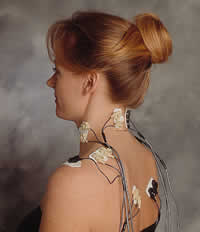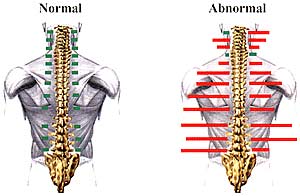 SEMG stands for Surface Electromyography. SEMG is a device which measures the amount of electrical activity your muscles release when they are contracting, more commonly known as muscle tension. It is similar in function to an EKG which measures heart muscle activity. Just as in EKG measurements, SEMG measurements simply require the placement of small probes against the skin.
SEMG stands for Surface Electromyography. SEMG is a device which measures the amount of electrical activity your muscles release when they are contracting, more commonly known as muscle tension. It is similar in function to an EKG which measures heart muscle activity. Just as in EKG measurements, SEMG measurements simply require the placement of small probes against the skin.
The test takes less than a few minutes, and is invaluable in determining if your muscles are "tensing" abnormally. These measurements not only help verify the severity of your condition, but also provide the data necessary to measure and track your chiropractic progress.
Muscles have a tendency to "brace" in response to spinal misalignments known as vertebral subluxations. These Subluxations create nerve interference which affect muscles, blood vessels and internal organs. Vertebral subluxations reduce your body's ability to maintain optimal health. When they're present, the nervous system is negatively impacted, resulting in increases or decreases in muscle activity. SEMG measurements show the muscular component of what's known as the Vertebral Subluxation Complex and alerts the chiropractor to the need to correct the subluxations; this is accomplished by a simple and effective procedure called an "adjustment".
 This figure shows a typical SEMG reading. The readings in green are normal, the brown are borderline, and red is abnormal. The information from your SEMG will help Alexandria-Arlington VA Injury Chiropractor, Dr. Leslie Holcombe, determine the type of care best suited to your case. Follow up testing is used to monitor and evaluate your progress as you begin to feel better. In most cases, the SEMG visually shows changes as muscle tension decreases and balances.
This figure shows a typical SEMG reading. The readings in green are normal, the brown are borderline, and red is abnormal. The information from your SEMG will help Alexandria-Arlington VA Injury Chiropractor, Dr. Leslie Holcombe, determine the type of care best suited to your case. Follow up testing is used to monitor and evaluate your progress as you begin to feel better. In most cases, the SEMG visually shows changes as muscle tension decreases and balances.
At Jefferson Spine & Injury Center, Alexandria-Arlington Accident Chiropractor, Dr. Leslie Holcombe is always committed to using the highest quality research and clinical grade state-of-the-art instrumentation available for the purpose of detecting soft tissue injury damage resulting from auto accidents, work injuries, trauma or falls and correcting spinal misalignments.